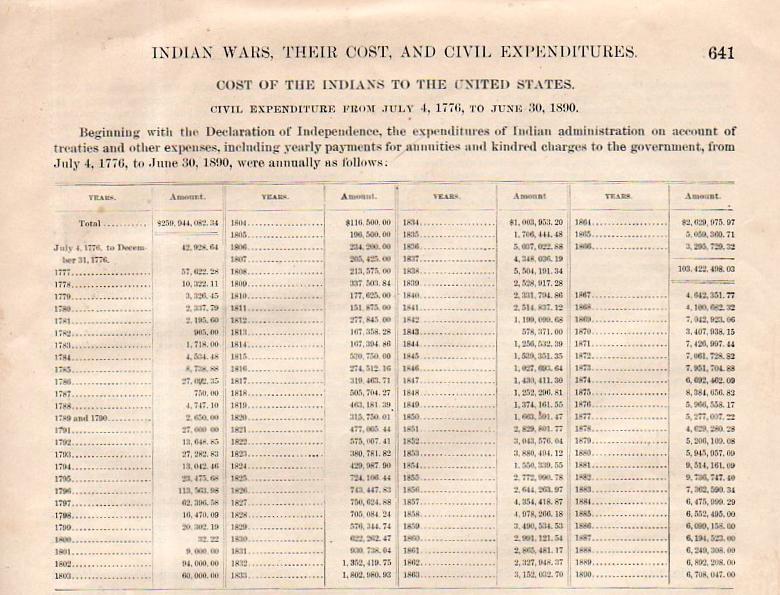The Vault is Slate’s history blog. Like us on Facebook, follow us on Twitter @slatevault, and find us on Tumblr. Find out more about what this space is all about here.
Blogger and antiquarian bookseller John Ptak recently dug up this table, in which the United States government tallied the total cost of civil expenditures associated with Native Americans between 1776 and 1890. The full Report on Indians Taxed and Indians Not Taxed in the United States (Except Alaska), which contains this figure, is 683 pages long.
At a time when settlers had moved into nearly all parts of the American West, and remaining Native Americans had been moved to reservations, the government took stock of the previous century of settler-Indian interactions. This chart comes from a section near the end of the report, titled “Indian Wars and their Cost, and Civil Expenditures for Indians.”
The section makes for fascinating and depressing reading. The authors find it impossible to assess the financial toll of the “Indian wars,” but settle on a total casualty number of “about 19,000 white men, women, and children,” and “the lives of about 30,000 Indians,” a number they admit must be much higher, as “[Indians] conceal, where possible, their actual loss in battle.”
The historical narrative of conflict seems dry and dispassionate, but is interspersed with praise of famous white fighters (Kit Carson, Daniel Boone) and comments on the undue ferocity of Indian opposition (“In the battle of January 17, 1873, in the Modoc war, the Modoc women moved over the battlefield and dispatched the wounded soldiers by beating out their brains”).
Throughout the report, the authors acknowledge that some of the military conflicts may have been instigated by white settlers, or provoked by unfair governmental practices. The underlying unfairness of it all—none of the conflicts would have happened, nor these civil costs been incurred, if not for white expansion—remains for modern eyes to see.

Open Library/Internet Archive.